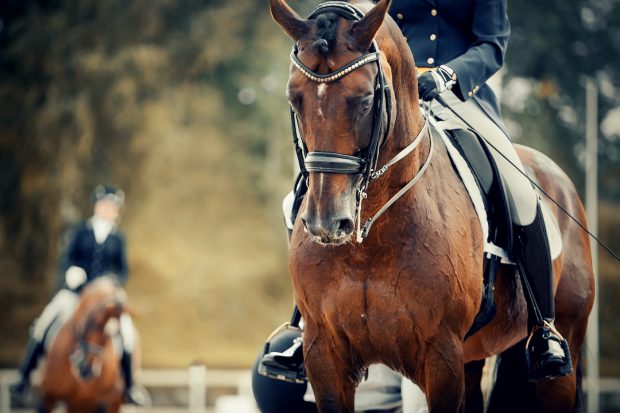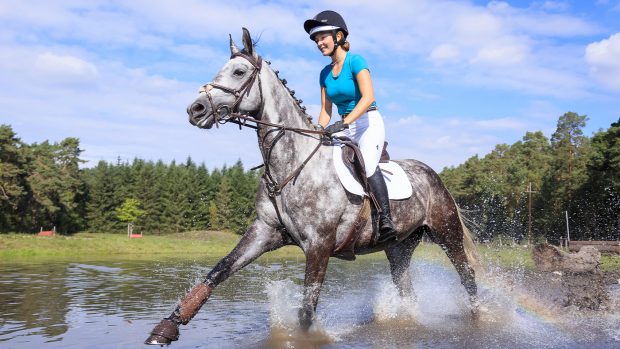Q: AT the VWH team chase in March, we spotted Jancey Wembridge from the Chilled Out Chasers competing in what looked like a motorcycle helmet described as “some serious headgear” in the chase report (13 March).
I presume this “hat” was allowed under Masters of Foxhunting Association (MFHA) rules, but why was she wearing it?
TS, Glos
WE, too, were impressed by Jancey’s headgear, so we decided to find out more.
Why was it worn?
ACCORDING to Jancey, the choice of helmet was a result of a serious hunting fall over the winter that required facial reconstruction surgery.
“My horse tipped up and got caught in his reins and, as he kicked to free himself, he smashed my head,” she said.
A facial consultant rebuilt her skull and eye. She now has titanium plates and an eye cage but Jancey was determined to carry on riding, and she asked her consultant what was the best way to protect her face.
“When my consultant realised what team chasing involved, he made it very clear he didn’t want the metalwork he had so carefully built, bent,” she said.
“The compromise was a crash helmet with protection to the face.”
What is it?
JANCEY could not find any equestrian helmets with face protection so chose this full-face motorcycle helmet with the option of riding with or without the visor. She finds it heavier than conventional hats but has got used to balancing herself.
“I intend to put the hat into retirement at the end of the team chasing season,” she said.
“You have to accept that, alongside the pleasure and the adrenalin buzz of jumping, there are inherent risks. Luckily, I also have a very bold, clever and careful horse in Who’s Dilemma.”
Is it competition-legal?
THE MFHA advised Jancey that she must prove that the helmet met current British Safety Standards to ride in team chases. It is not allowed under British Eventing (BE) rules, however.
“The BE standards are different because the accidents are of a different type — speed, surface, height etc. The tests made on equestrian hats are specific to the hazards of the sport,” said a BE spokesman.
This Q&A was first published in Horse & Hound (3 April, ’08)



